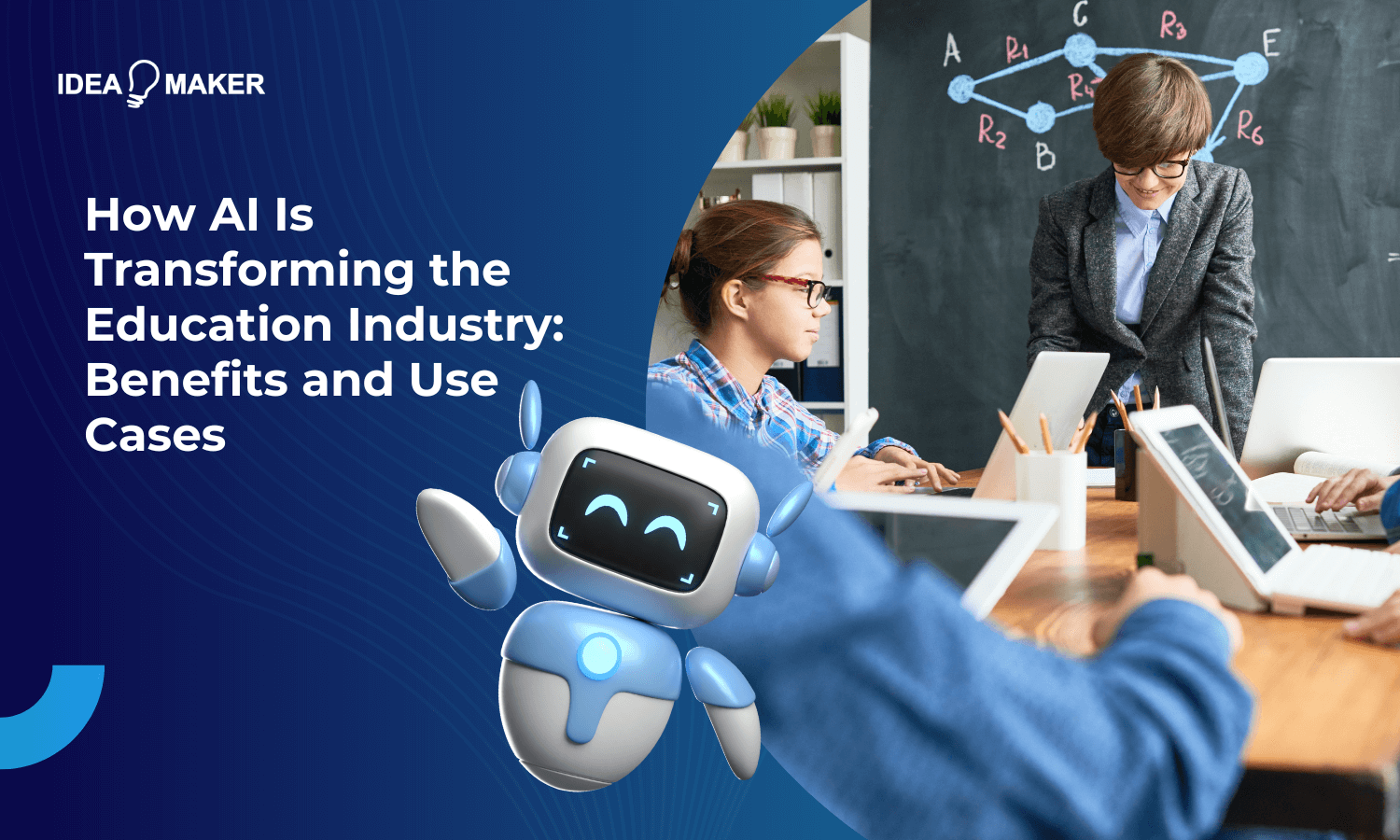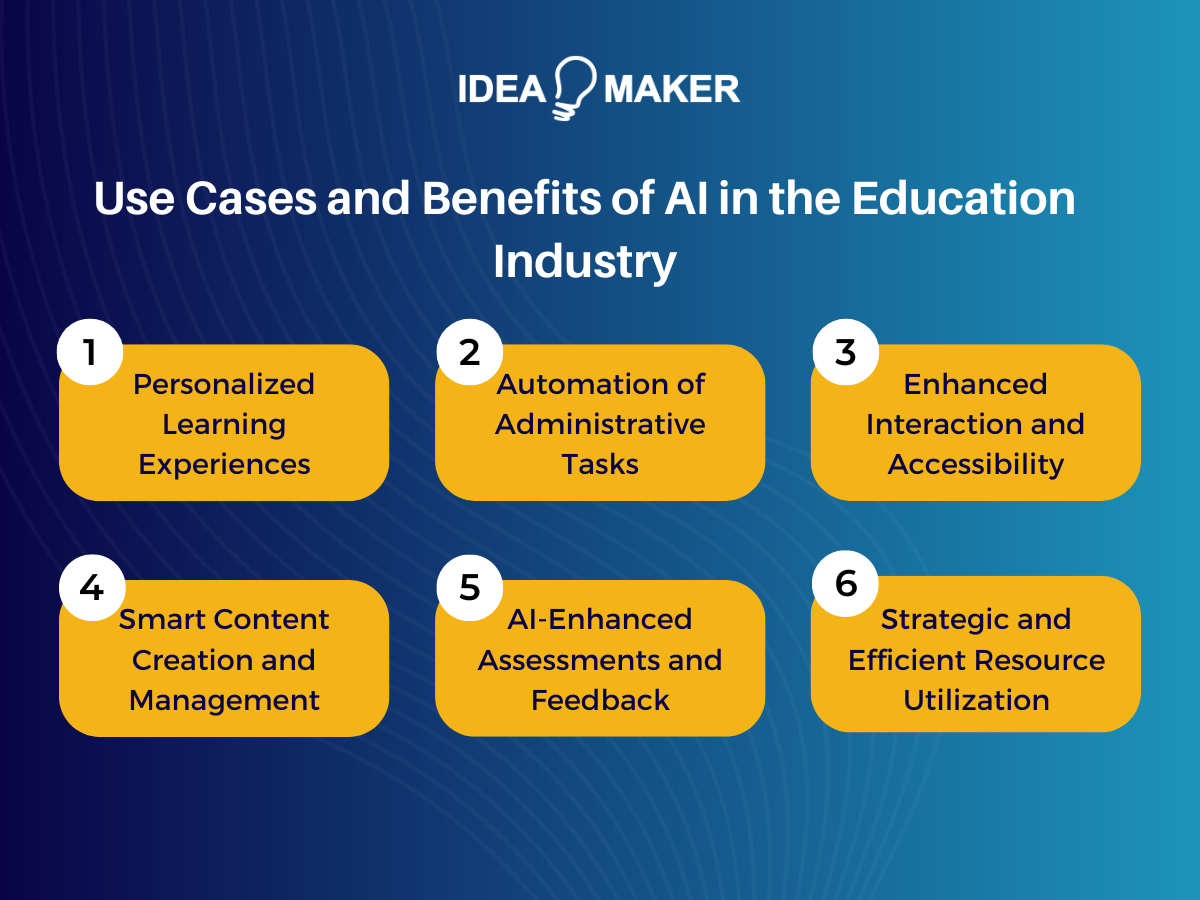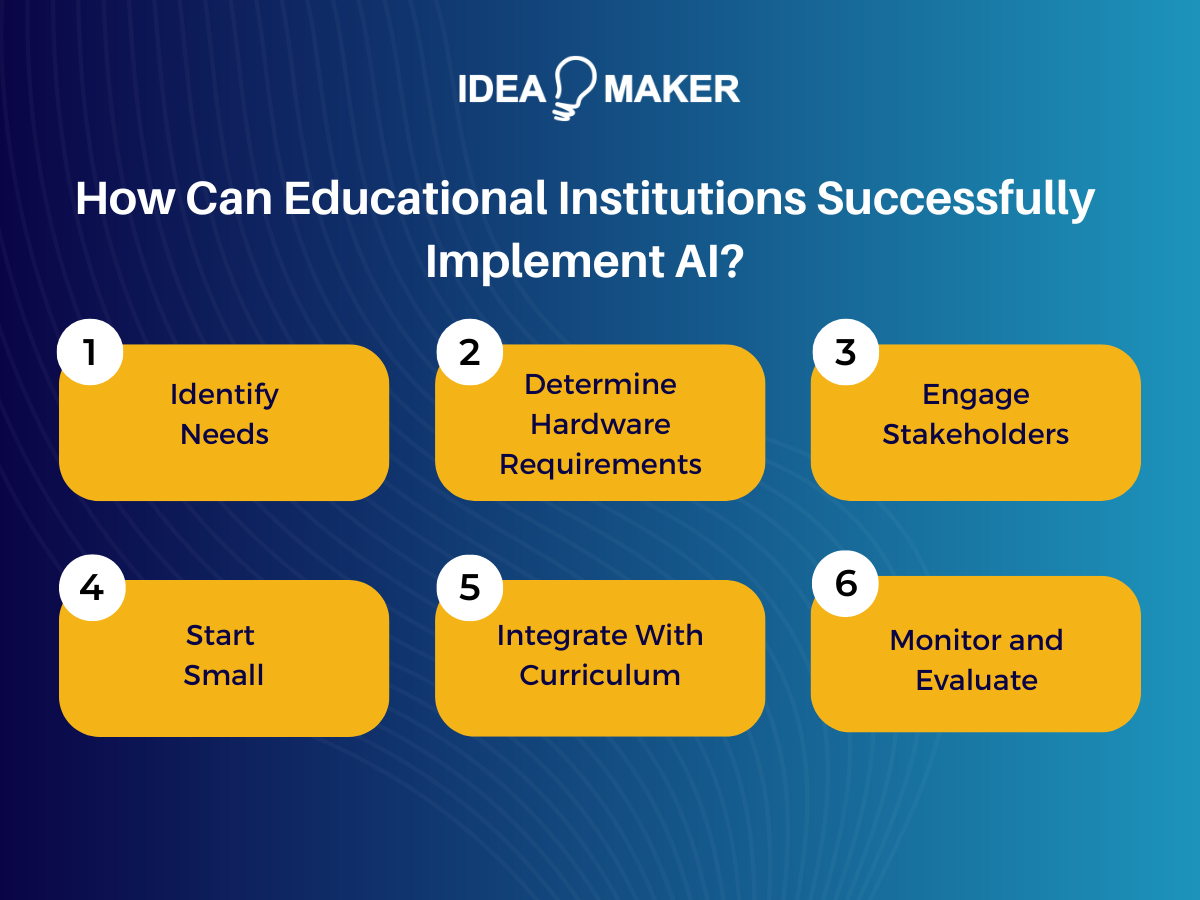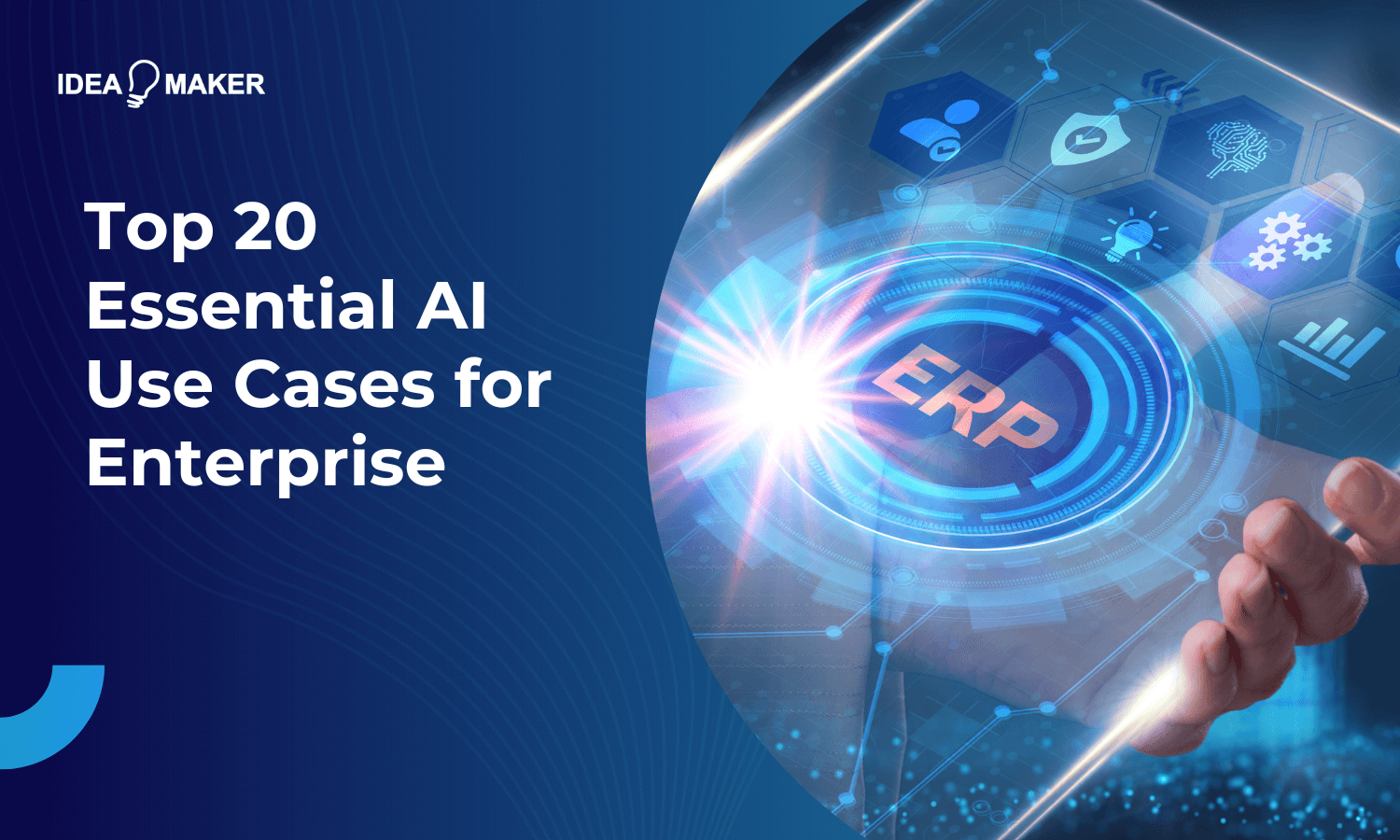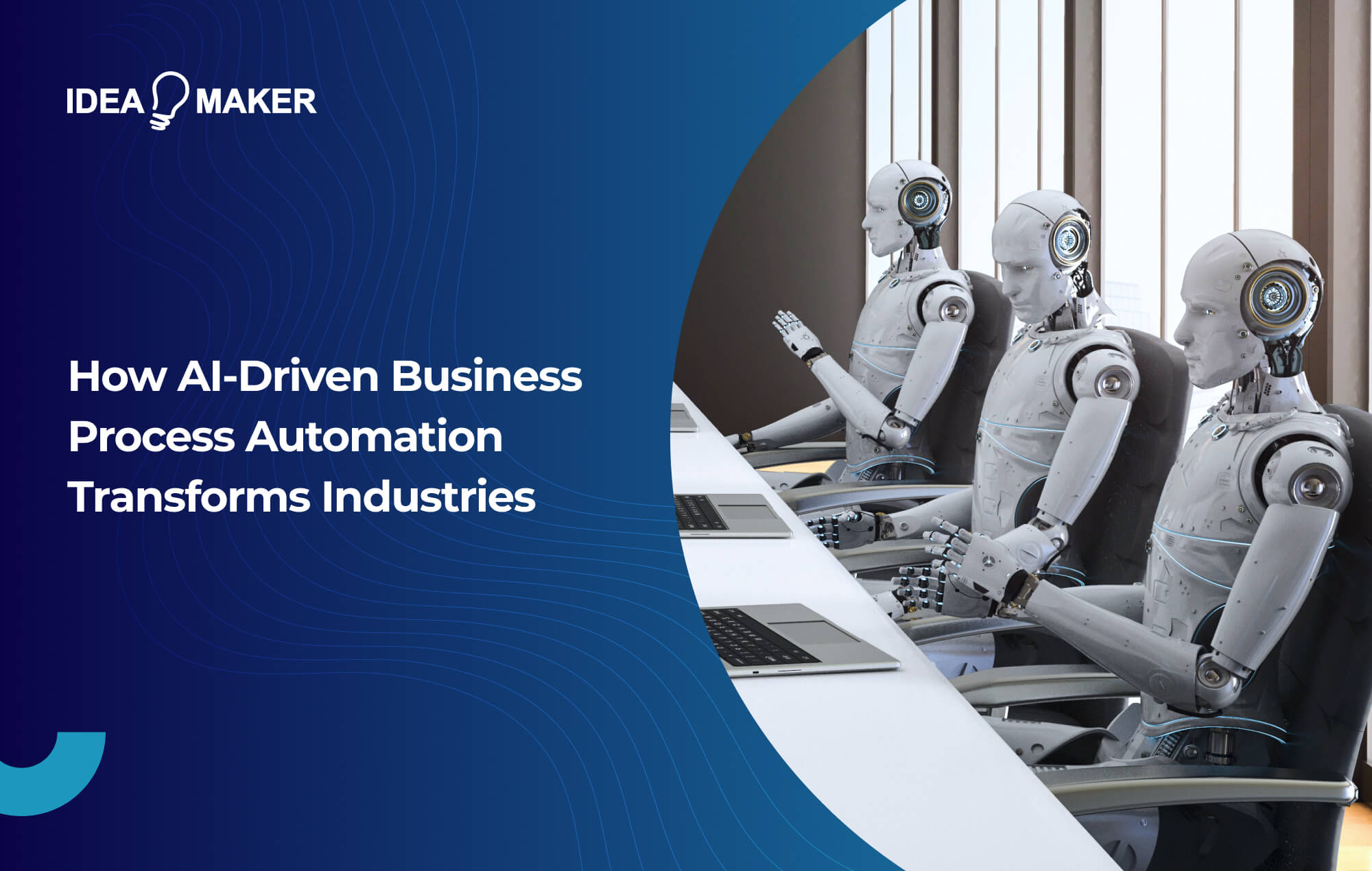Artificial intelligence has proven to be a powerful force, permeating nearly every area of modern life and reshaping businesses across the board. With its myriad of benefits, from increased efficiency to reduced errors, it’s no surprise that more and more industries are embracing the technology – and education is no exception.
In fact, many educational establishments are now leveraging AI to automate administrative tasks and generate personalized lesson plans, enhancing the overall experience for both students and staff. Yet even with this potential to transform the industry, the use of AI in education does come with some significant concerns, especially in terms of data privacy and academic integrity.
However, by seeking the support of AI professionals within the education industry, your institution can avoid these challenges and unlock the technology’s immense value. So, to help get you started, we’ve outlined everything you need to know about successfully integrating AI into your own educational setting. Keep reading to learn more.
Table of Contents
Use Cases and Benefits of AI in the Education Industry
Integrating AI can bring your educational establishment numerous benefits, from increased student engagement to an improved work-life balance. Let’s now dive deeper into these advantages, exploring how you can leverage the technology to enhance various tasks.
-
Personalized Learning Experiences
To meet the learning needs of various students, educators have traditionally utilized a strategy known as differentiation. This generally involves creating lesson plans that target the majority of students, along with additional activities aimed at engaging those at lower readiness levels.
While this educational approach has long been considered best practice, the development of AI in recent years is opening the doors for a major paradigm shift in which every student is afforded a personalized learning experience. Some top examples of how AI can be leveraged to accomplish this include:
- Intelligent Tutoring Systems: With an intelligent tutoring system, natural language processing and machine learning technologies can reveal the different learning styles of every pupil. This enables educators to tailor assessments and instructional material for each individual student, improving engagement and overall understanding.
- Personalized Learning Content: Machine learning algorithms can also be used to personalize educational activities in real time, adapting the curriculum to match each students’ progress and learning styles. For example, the technology can make adjustments to the instructional material’s level of difficulty and the pace in which it’s delivered to meet each students’ learning needs. This typically results in more effective learning outcomes and also provides teachers with valuable insights into their students.
- Data-Based Feedback: With AI, educators can access continuous data-based feedback, ensuring a better understanding of every student. This level of analysis enables you to celebrate your students’ success and also helps identify any gaps in learning and knowledge.
-
Automation of Administrative Tasks
AI-based task automation helps foster a more efficient and productive learning environment, as it enables staff to focus their efforts on more creative educational initiatives. From administrative support to curriculum planning, there are several tasks that can be streamlined with AI.
- Grading and Assessments: Teachers can leverage AI to assist with the grading process, analyzing and evaluating student work in mere seconds. Other administrative tasks, such as research paper organization and report management, can also be automated.
- Chatbot-Powered Administrative Support: AI chatbots and other virtual assistants can be implemented to handle a variety of support tasks for administrative staff, teachers, and even students. For example, a chatbot could be utilized to ease the enrollment process, provide students with study materials, and deliver instant responses to FAQs around the clock.
- Curriculum Planning: By analyzing student data, AI can identify trends and gaps in learning, enabling educators to refine their lesson plans accordingly. The technology can even suggest adjustments or updates be made to the instructional content based on real-time insights. With an adaptive curriculum, teachers can enjoy a streamlined planning process while also enhancing the quality and relevance of the material.
- Secure Proctoring: The internet has become an integral component to modern education; however, due to its widespread accessibility, it is becoming increasingly difficult to ensure the security, equitability, and credibility of examinations. AI can help mitigate this issue by monitoring online tests, reducing the likelihood of cheating and ensuring a fair examination process.
-
Enhanced Interaction and Accessibility
Student engagement plays a significant role in achieving successful learning outcomes but encouraging classroom participation can be challenging. While this has been a constant pain point within the teaching profession, AI can be used to enhance student interaction by offering personalized learning content. This enables students to access instructional material based on their unique learning style, increasing engagement and ensuring a positive experience.
Here are a few ways you can leverage AI in your own classroom to encourage student interaction and enhance the learning process for every student:
- Learning Games: One of the best ways to improve the learning experience is by utilizing interactive games. This approach focuses on presenting educational content in the form of video games that include gamification elements, such as earning badges after mastering a course, to keep students engaged. To personalize the experience, AI algorithms can also be used to generate compelling game plots and adaptive narratives for each student.
- Reading Assessment Tools: Teachers can leverage various AI-powered tools to help evaluate student reading levels and even detect dyslexia. These screening tools ensure students with dyslexia and other learning disabilities can access intervention programs earlier in their education. On top of this, there are several platforms, such as Grammarly and ChatGPT, that use voice recognition technology to assist those struggling with reading and writing.
- Language Learning Enhancements: AI can assist individuals learning a new language by providing real-time feedback in terms of proper pronunciation, vocabulary, and grammar. This prevents the chances of incorrect pronunciation becoming ingrained in the early stages of learning and boosts overall understanding. Additionally, through natural language processing, students can interact with AI in real life scenarios and conversations, ensuring a practical and engaging learning experience.
-
Smart Content Creation and Management
Designing lesson plans can be a burdensome and time-consuming task that often eats into teachers’ personal time. However, AI can help teachers greatly improve their work-life balance by creating and managing course content, ultimately increasing productivity. Some examples of how the technology can assist with this include:
- Dynamic Learning Materials: Teachers can use AI to discover dynamic learning materials that complement worksheets and other printed content, ensuring a seamless learning experience that keeps students engaged.
- Digital Lesson Generation: For remote learning, AI can be utilized to create compact, storage-friendly resources and digital lessons, providing comprehensive access to the curriculum on various devices.
- Information Visualization: By leveraging AI, web-based study can be transformed into lifelike, immersive learning experiences with 2D and 3D visualizations that help enhance comprehension.
- Immediate Feedback Systems: AI powered chatbots and virtual assistants can be used to provide real-time feedback to students while promoting independent learning and problem-solving skills. These feedback systems can also be individualized to each students’ learning style, ensuring everyone has access to the support they need.
-
AI-Enhanced Assessments and Feedback
As we touched on earlier, AI can help streamline the assessment process by monitoring student exams and preventing the likelihood of cheating. However, the technology can also enhance the testing process by providing valuable feedback and identifying potential learning gaps.
- Exam Monitoring: During student examinations, AI can track each individual’s test activity to detect suspicious behavior and flag possible instances of cheating. This is done by monitoring each student’s keystrokes, as well as their webcam, microphone, and web browser.
- Vulnerability Assessments: AI solutions can be leveraged to analyze a student’s learning and comprehension of critical concepts via data gathered during testing. By doing so, individual learning gaps, as well as vulnerabilities across entire classrooms, can be quickly and effectively identified, ensuring teachers only revisit unmastered material.
- Continuous Learning Support: With conversational AI, students can instantly access the assistance they need, no matter the time or day. This 24/7 support helps prevent students from getting “stuck” during their coursework, as they can conveniently leverage an AI chatbot for clarification or even inspiration.
-
Strategic and Efficient Resource Utilization
Integrating AI can help your educational establishment better manage its budget and resources, leading to increased efficiency. For instance, by automating administrative tasks, student support, and curriculum planning, your staff is able to spend more time on complex and creative initiatives. This enhanced productivity, combined with AI’s ability to instantly retrieve information and access vast data sets, ultimately allows you to allocate your resources more efficiently.
How Can Educational Institutions Successfully Implement AI?
When implementing AI into your institution, it’s crucial to adhere to a clear plan in order to unlock successful results. These steps will help guide you through the process, ensuring a seamless integration.
- Identify Needs: Prior to implementation, it’s crucial to determine what you wish to accomplish with AI, such as speeding up student registration or improving classroom engagement. You can then begin setting quantifiable business goals that can later be used to measure the success of your implementation.
- Determine Hardware Requirements: You will also need to determine the hardware your software requires based on your previously defined needs and objectives. This can be done by consulting a software development company to assess your current software and recommend compatible AI solutions. However, it’s possible that your project will require upgrades to your current infrastructure.
- Engage Stakeholders: From there, you will need to reach out to staff and students to help garner support for the project. A seminar, for instance, could be held for students to learn more about how AI can enhance their education, while information can be provided to staff about educational establishments that have had success with the technology.
- Start Small: To get people on board with the project, it’s best to “start small” in terms of AI solutions. This means initially only seeking to integrate the tools that the majority of staff and students would like to utilize. By gathering feedback, you should be able to easily identify which tools to move forward with, as well as how the implementation can be further improved.
- Integrate With Curriculum: To integrate AI into your pedagogy, you will need to review your curriculum, identifying areas that could be enhanced with AI. It’s also important to consider whether you plan to leverage the technology to set independent learning tasks or create an immersive educational environment to explore a certain subject matter such as a historical event.
- Monitor and Evaluate: After implementing the technology, it’s vital to continuously monitor and evaluate whether AI is enabling students to achieve various learning objectives. If not, the curriculum content and integration will need to be adapted to ensure that it performs as intended. For this reason, taking an iterative approach to AI integration is generally recommended.
By following this plan, you will be well poised to discover how your educational establishment can successfully integrate AI technology across all areas of your institute. However, if you feel that you require professional help with the integration process, then do not hesitate to reach out to the experts at Idea Maker.
How Idea Maker AI Development Services Can Transform Your Education Institute
If you’re ready to embrace the future of education, Idea Maker is here to help. We have a team of professional and experienced software engineers who specialize in the integration of AI within the education industry. Contact us today to find out how we can transform your education institute.
